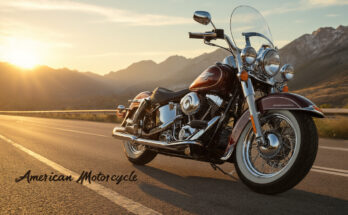Ever caught yourself admiring a Harley rumbling past, wondering what makes it so damn special? There’s a reason these iconic American motorcycle brands command cult-like loyalty that borders on obsession.
For riders, choosing between the legendary American motorcycle brands isn’t just about transportation—it’s about identity. Each iconic motorcycle brand in America tells a different story through steel, chrome, and thunder.
Whether you’re a seasoned rider or just motorcycle-curious, this guide cuts through the marketing hype to reveal what actually matters about Harley-Davidson, Indian, and other American legends.
But here’s what most people get wrong about these machines: the best American motorcycle isn’t necessarily the one with the biggest engine or loudest pipes…
Heritage Legends: The Founding Fathers of American Motorcycles
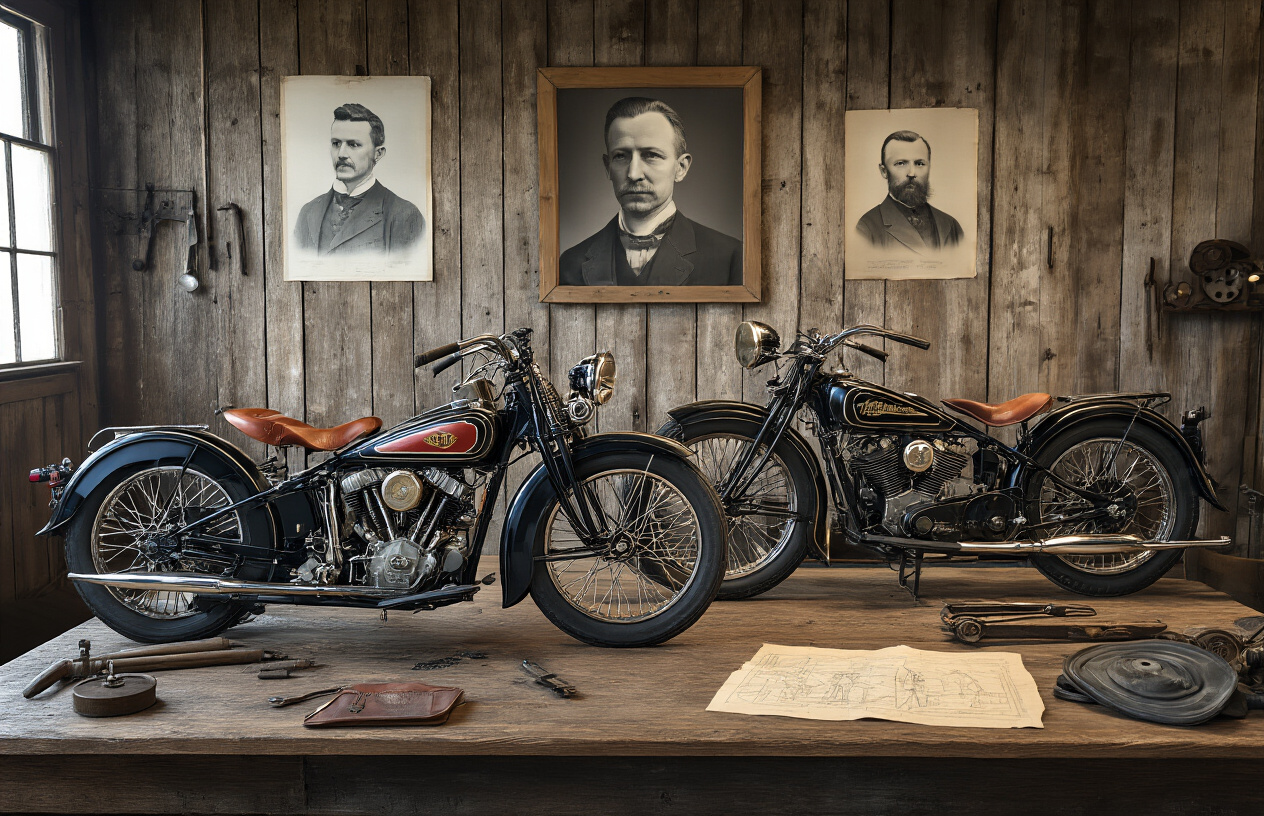
A. Harley-Davidson: The Bar and Shield Legacy
Ever seen that iconic orange and black shield on the highway? That’s American motorcycle royalty right there. Harley-Davidson isn’t just a motorcycle brand – it’s a lifestyle, a culture, and for many riders, practically a religion.
Founded in 1903 by William Harley and the Davidson brothers in a tiny wooden shed in Milwaukee, this brand defined what American motorcycles should be: big, loud, and unapologetically bold. The V-twin engine’s distinctive “potato-potato-potato” rumble has become the heartbeat of American roads.
What makes Harley special isn’t just their bikes – it’s their survival story. They’ve weathered wars, the Great Depression, foreign competition, and nearly went bankrupt in the 1980s. But like any true American icon, they refused to die.
Today’s Harleys blend that old-school heritage with modern tech. From the Street Glide to the Fat Boy, each model carries decades of American motorcycle DNA while still evolving. Their loyal following (often called HOGs – Harley Owners Group) is unlike anything else in motorcycling.
B. Indian Motorcycle: America’s First Motorcycle Company
Before Harley, there was Indian. Founded in 1901, Indian Motorcycle earned the title of America’s first motorcycle manufacturer, and boy, did they make it count.
The early Indian Chiefs, Scouts, and Spirits dominated both streets and racetracks, with their distinctive red paint becoming synonymous with speed and craftsmanship. These weren’t just transportation – they were mechanical masterpieces.
Indian’s story isn’t all victory laps though. The company went under in 1953, leaving a gaping hole in American motorcycling for decades. After several failed revival attempts, Polaris Industries finally resurrected the brand properly in 2011.
The modern Indian lineup honors that rich heritage while delivering serious performance to challenge anyone – yes, even Harley. The new Scout, Chief, and FTR models combine vintage-inspired styling with modern engineering that would make the founders proud.
C. Victory and Its Short-Lived Glory
Victory’s story is the briefest chapter in American motorcycle history, but it deserves its place in the heritage books.
Born in 1998 as Polaris Industries’ attempt to take on Harley-Davidson, Victory motorcycles brought something fresh to American riding: performance-focused machines with aggressive styling that stood apart from traditional cruisers.
The Victory Vision, Cross Country, and Vegas models gained a devoted following for their distinctive looks, reliable mechanics, and value pricing. They weren’t trying to be Harley clones – they carved their own path.
But sometimes even good bikes don’t survive. When Polaris acquired Indian Motorcycle in 2011, Victory’s days became numbered. By 2017, Polaris pulled the plug, focusing resources on Indian instead.
Victory’s legacy lives on through their innovations and design elements that influenced American motorcycling during their 19-year run. Sometimes the brightest flames burn half as long.
Harley-Davidson: The Quintessential American Icon
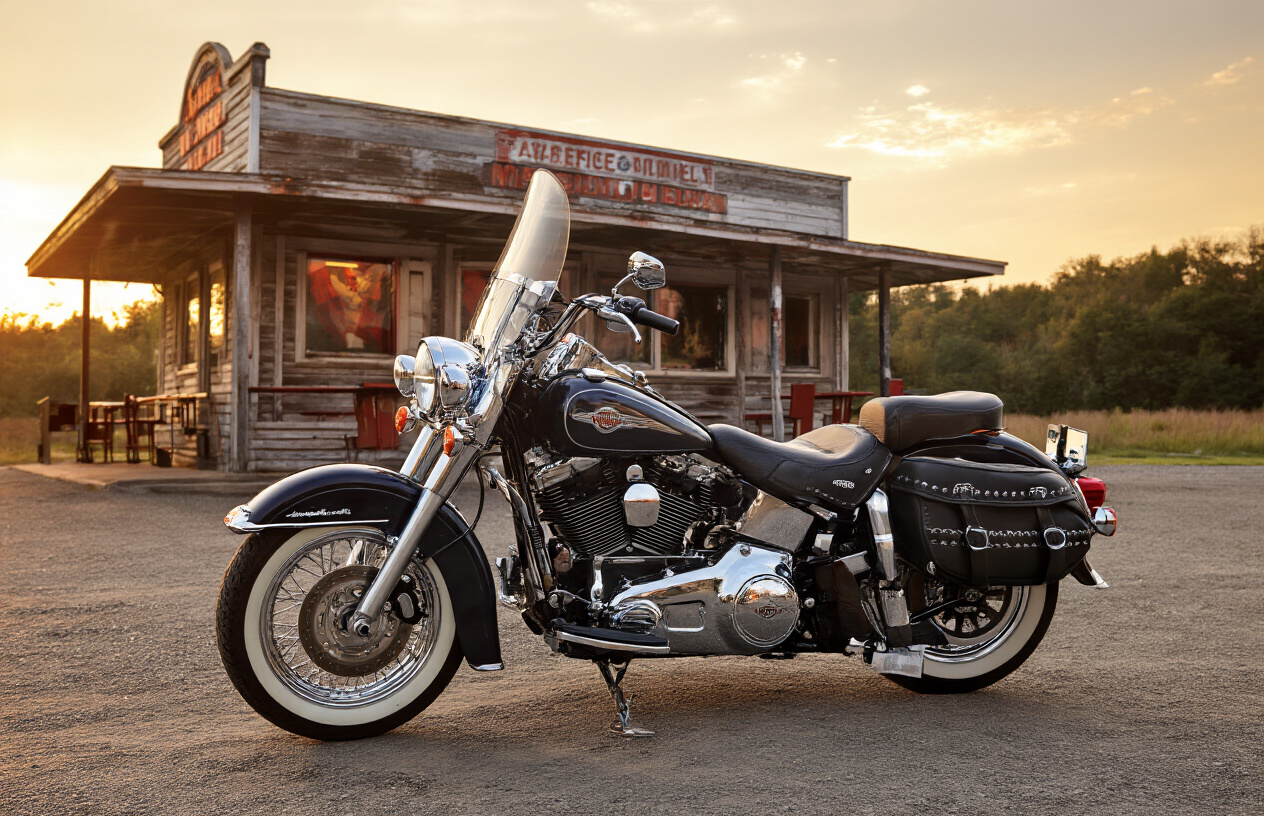
A. Signature Models That Defined Generations
When you think American motorcycles, Harley-Davidson instantly roars to mind. The legendary Motor Company has created machines that didn’t just define riding—they shaped entire eras.
The 1936 EL “Knucklehead” changed everything with its 61 cubic inch overhead valve engine. Riders still get misty-eyed talking about it. Then came the 1948 Panhead with its distinctive chrome rocker covers that looked like upside-down pans (see where the name came from?).
The 1957 Sportster? That bad boy’s still in production today—making it one of the longest continuously manufactured motorcycles in the world. Talk about staying power.
But nothing screams “freedom machine” like the 1971 Super Glide—Willie G. Davidson’s baby that launched the factory custom movement. And who could forget the 1980 FLT Tour Glide that revolutionized long-distance riding comfort?
The Fat Boy exploded into popular culture when Arnold rode it in Terminator 2, while the Street Glide became the best-selling motorcycle in America, period.
B. Evolution of the Iconic V-Twin Engine
Harley’s V-Twin isn’t just an engine—it’s the beating heart of American motorcycling.
The journey started with the atmospheric F-Head in 1909, putting out a whopping 7 horsepower. Not impressed? Back then, it was revolutionary.
By 1936, the Knucklehead delivered smoother power and better reliability. The Panhead (1948-1965) brought hydraulic valve lifters and aluminum heads that ran cooler. The Shovelhead followed with increased displacement and power.
The game changed completely in 1984 with the Evolution engine. The “Evo” finally solved Harley’s oil leak reputation while boosting performance.
The Twin Cam arrived in 1999 with dual cams and better breathing, followed by the Twin-Cooled engines that quietly added liquid cooling to critical areas.
Today’s Milwaukee-Eight engine delivers 50% more torque than its predecessors with four valves per cylinder and counterbalancing that eliminates the famous “Harley shake” without losing that distinctive rumble that makes Harley owners grin.
C. The Harley Culture: More Than Just Motorcycles
Owning a Harley isn’t buying transportation—it’s joining a tribe.
H-D rallies aren’t events, they’re pilgrimages. Sturgis alone draws over 500,000 riders annually. Daytona Bike Week? That’s where Harley owners showcase everything from bone-stock classics to wildly customized showpieces.
The Harley Owners Group (H.O.G.) boasts over a million members worldwide. These aren’t casual riders—they’re die-hards who plan vacations around rallies and group rides.
Walk into any Harley dealership and you’ll find it’s as much community center as retail space. Riders gather for coffee, swap stories, and plan weekend adventures.
The culture extends beyond riding. The bar-and-shield logo appears on everything from baby onesies to caskets (seriously). People tattoo the logo on their bodies—that’s commitment you don’t see with Honda owners.
What other vehicle manufacturer has owners so passionate they’ll ride thousands of miles just to visit the factory in Milwaukee? Or spend more on customizing their bikes than the original purchase price?
D. Modern Innovations While Preserving Tradition
Harley faced a tough challenge: evolve or die while keeping their soul intact.
They’ve pulled it off masterfully. Take the Livewire—Harley’s first electric motorcycle. It delivers face-melting acceleration (0-60 in 3 seconds) while maintaining distinctly Harley styling cues. The company created an entirely new sub-brand for their electric ventures without diluting the mothership.
The Pan America adventure bike shocked critics by being genuinely excellent, with adaptive ride height technology that no competitor offered. It gave Harley access to an entirely new market segment.
Their Reflex Defensive Rider Systems brought cutting-edge safety technology like cornering ABS and traction control to traditional cruisers without sacrificing their classic look.
Behind the scenes, manufacturing transformed with robotic welding and advanced metallurgy while keeping hand-assembled final construction. Modern Harleys pack digital displays and Bluetooth connectivity inside those timeless tank shapes.
The company’s master stroke? Making these innovations invisible to traditionalists while offering tech-savvy riders the modern features they demand. That’s how you survive 120 years in business.
Indian Motorcycle: The Resurrected Legend
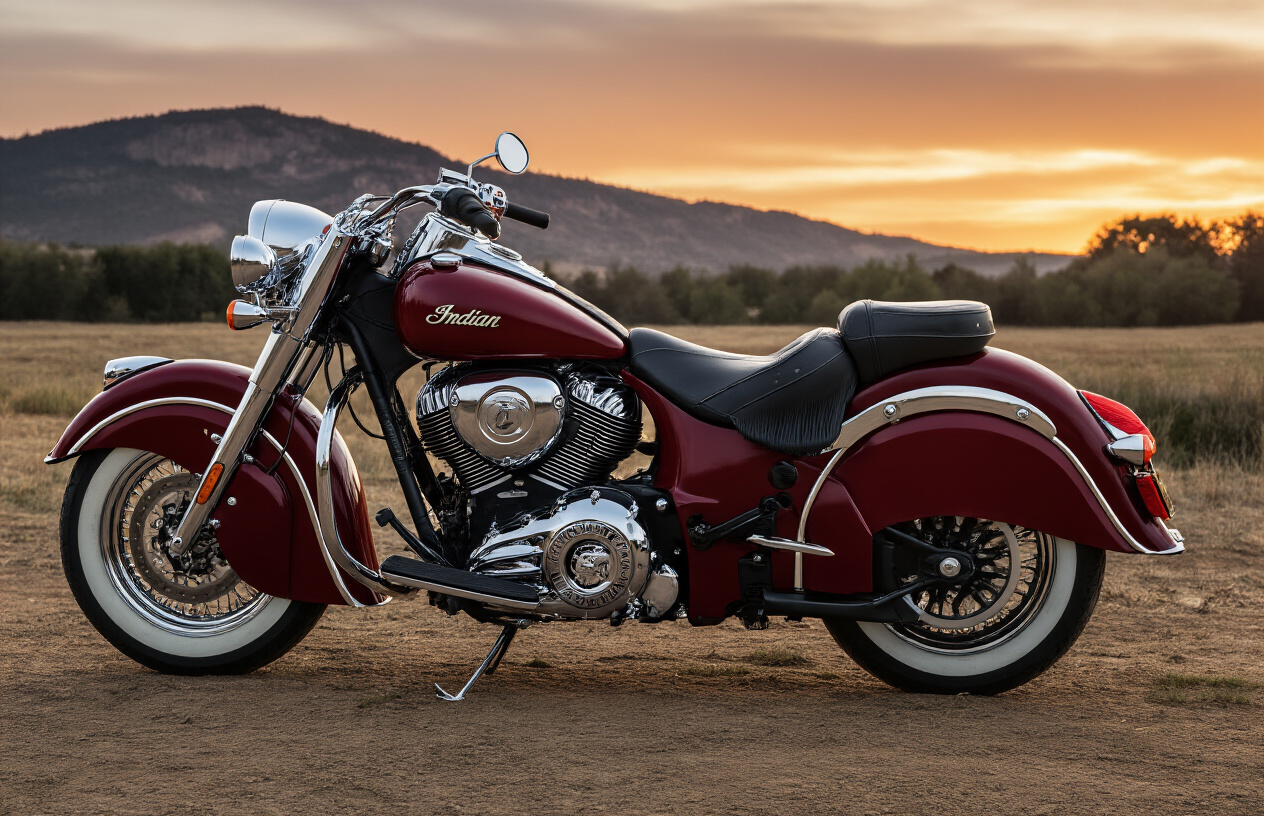
The Historic Rivalry with Harley-Davidson
The Indian vs. Harley feud isn’t just motorcycle history—it’s American folklore. These two brands were throwing punches before World War II, battling on dirt tracks and salesroom floors. Indian actually came first in 1901, with Harley following in 1903. For decades, they dominated racing circuits across America, each claiming their machines were superior.
The rivalry died when Indian folded in 1953, but the grudge never really went away. Even today, mention both brands in a bike bar and watch the arguments start. It’s like Ford vs. Chevy, but with more leather and attitude.
FTR Series: Bringing Flat Track to the Streets
The FTR 1200 isn’t just a motorcycle—it’s Indian flipping the bird to convention. When they launched it in 2019, it shocked everyone. Here was Indian, known for heavy cruisers, suddenly dropping a rowdy flat track-inspired naked bike with 120 horsepower.
This wasn’t your grandpa’s Indian. The FTR brought Indian’s dirt track dominance to asphalt, with high bars, an upright riding position, and aggressive styling that makes most Harleys look like retirement homes on wheels. The latest FTR models handle even better, with tweaked ergonomics and wheel sizes that make them corner like they’re on rails.
Today’s Scout and Chief Lineups
Indian’s comeback story centers around two iconic names: Scout and Chief. The Scout lineup starts with the sixty—the gateway drug to Indian ownership—and runs up to the bobber variants that look like they’d steal your lunch money.
The Chief models bring the thunder with bigger engines, more presence, and price tags to match. The Chief Dark Horse and Super Chief Limited are basically rolling art pieces with their thunderous 116-cubic-inch motors and classic lines.
What makes the modern lineup special? They combine that vintage Indian DNA with tech that actually works. LED lighting, touchscreen displays, and ride modes all wrapped in packages that still make you look cool at stoplights.
How Polaris Revitalized an American Classic
Polaris didn’t just resurrect Indian in 2011—they performed a miracle. Previous attempts to bring Indian back were sad affairs that produced overpriced, underwhelming bikes trading solely on nostalgia.
Polaris did something different. They invested serious cash, built an entirely new platform, and respected the heritage while refusing to be handcuffed by it. The Thunder Stroke engine they developed looked vintage but performed like a modern motor should.
Unlike the failed revival attempts, Polaris understood that competing with Harley meant offering something different, not just cheaper versions of the same thing. They focused on performance, build quality, and creating a distinct identity rather than becoming “Harley-lite.”
Performance Comparisons with Competitors
| Model | Horsepower | Torque | Weight | Price |
|---|---|---|---|---|
| Indian Chief | 108 hp | 128 ft-lb | 670 lbs | $14,499+ |
| Harley Softail | 100 hp | 125 ft-lb | 680 lbs | $15,349+ |
| Indian FTR | 120 hp | 87 ft-lb | 514 lbs | $12,999+ |
| Triumph Bonneville | 100 hp | 77 ft-lb | 520 lbs | $12,200+ |
Where Indians truly shine is torque delivery. The Thunder Stroke motors pull like freight trains from idle, while the FTR models deliver sports bike-level acceleration. Compared to Harley’s Milwaukee-Eight engines, the Indians feel more refined with less vibration.
Weight remains the Achilles heel for both American brands, though Indian has made more progress trimming the fat. Handling-wise, Indians generally offer more cornering clearance and responsive suspension than their Harley counterparts.
Boutique American Brands Worth Knowing
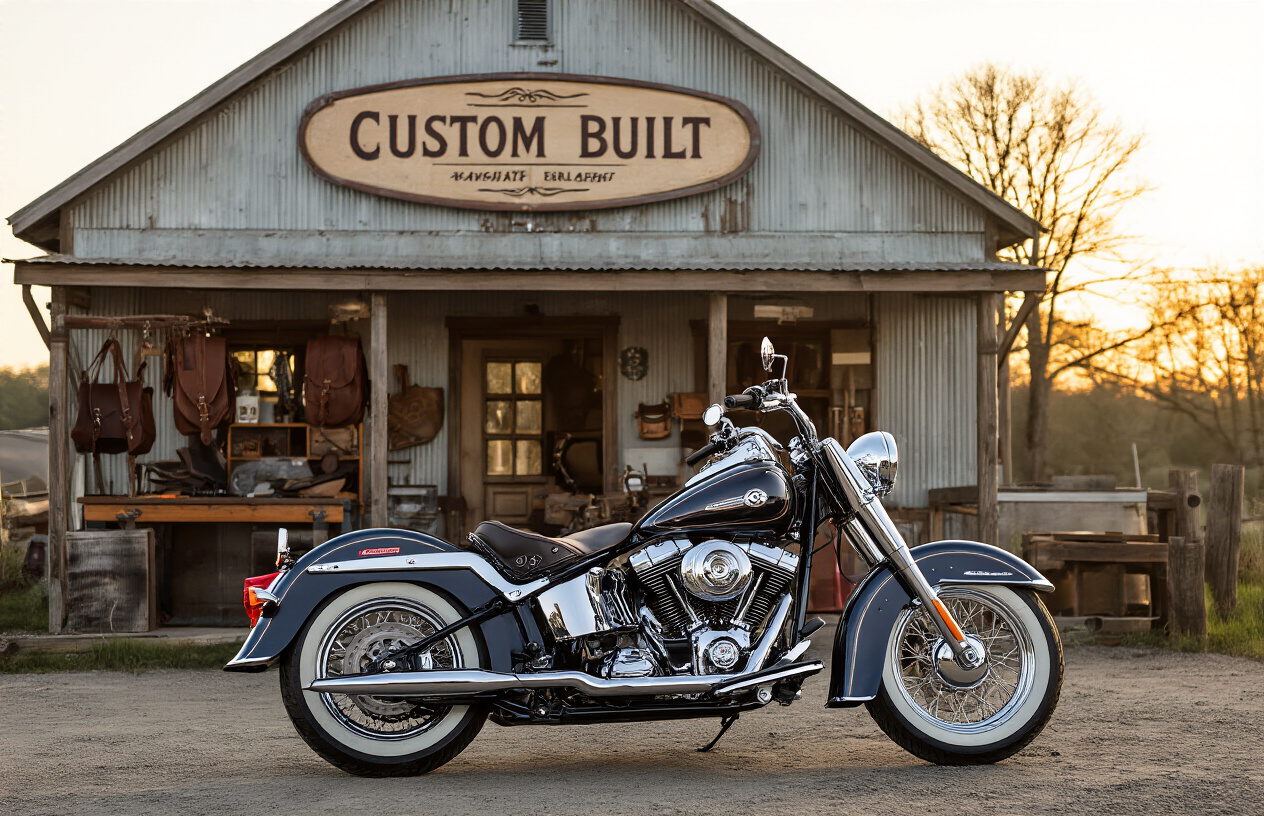
A. Motus: The V4 American Sport Tourer
While Harley and Indian grab the spotlight, Motus carved its own path with something totally unexpected – an American sport tourer with a V4 engine. The Alabama-based company built the MST and premium MSTR models from 2014 to 2018, powered by their proprietary “Baby Block” V4 pushing 180 horsepower.
What made Motus special? They dared to build what the big manufacturers wouldn’t – a comfortable, high-performance machine designed for eating miles across America’s highways with genuine sportbike DNA. No one else was doing that here.
Sure, they weren’t cheap at $30,000+, but these bikes weren’t mass-produced cookie-cutter machines either. Each one represented American engineering ambition at its finest.
B. Confederate/Curtiss: Mechanical Art on Two Wheels
Confederate (now Curtiss) motorcycles aren’t just bikes – they’re rolling sculptures that happen to have engines. These machines look like they rolled straight out of a sci-fi movie with their skeletal frames, aircraft-grade materials, and totally bonkers design philosophy.
With prices starting around $100,000 and limited production runs, these aren’t your everyday riders. They’re statement pieces built for collectors and those who demand something nobody else on the road has.
The Wraith, Hellcat, and P51 Combat Fighter models push engineering boundaries with their exposed mechanical components and raw industrial aesthetic. When one rumbles by, you can’t help but stare.
C. Zero Motorcycles: Leading the Electric Revolution
While the old guard was busy perfecting combustion engines, Zero Motorcycles quietly built an empire on battery power. Founded in 2006 in Santa Cruz, California, Zero has become America’s premier electric motorcycle brand.
Their current lineup spans everything from urban commuters to adventure bikes, with impressive specs that silence the “but it’s electric” skeptics:
- 140+ miles range on a charge
- 0-60 times that embarrass many gas bikes
- Silent operation that lets you hear the world around you
- Nearly zero maintenance (no oil changes, valve adjustments, etc.)
The SR/F and SR/S models particularly stand out with superbike-level performance wrapped in sleek, modern designs that don’t scream “I’m different!” They just happen to be electric.
D. Arch Motorcycle: Keanu Reeves’ Custom Dream Machines
Yes, that Keanu Reeves. The Hollywood star partnered with master builder Gard Hollinger to create Arch Motorcycle, producing some of the most meticulously crafted production customs you can buy.
Their flagship KRGT-1 combines the soul of a custom bike with the reliability and refinement of a production motorcycle. Each bike is built to the owner’s specifications, from ergonomics to finish details.
What sets Arch apart is their obsessive attention to detail – over 200 parts are machined in-house from solid billet aluminum. These aren’t just rebadged customs; they’re ground-up designs with proprietary architecture.
At $85,000+, they’re exclusive by nature, but unlike many boutique brands, an Arch is built to be ridden hard and daily if you want. These are functional art pieces that happen to go like stink.
What Makes American Motorcycles Unique
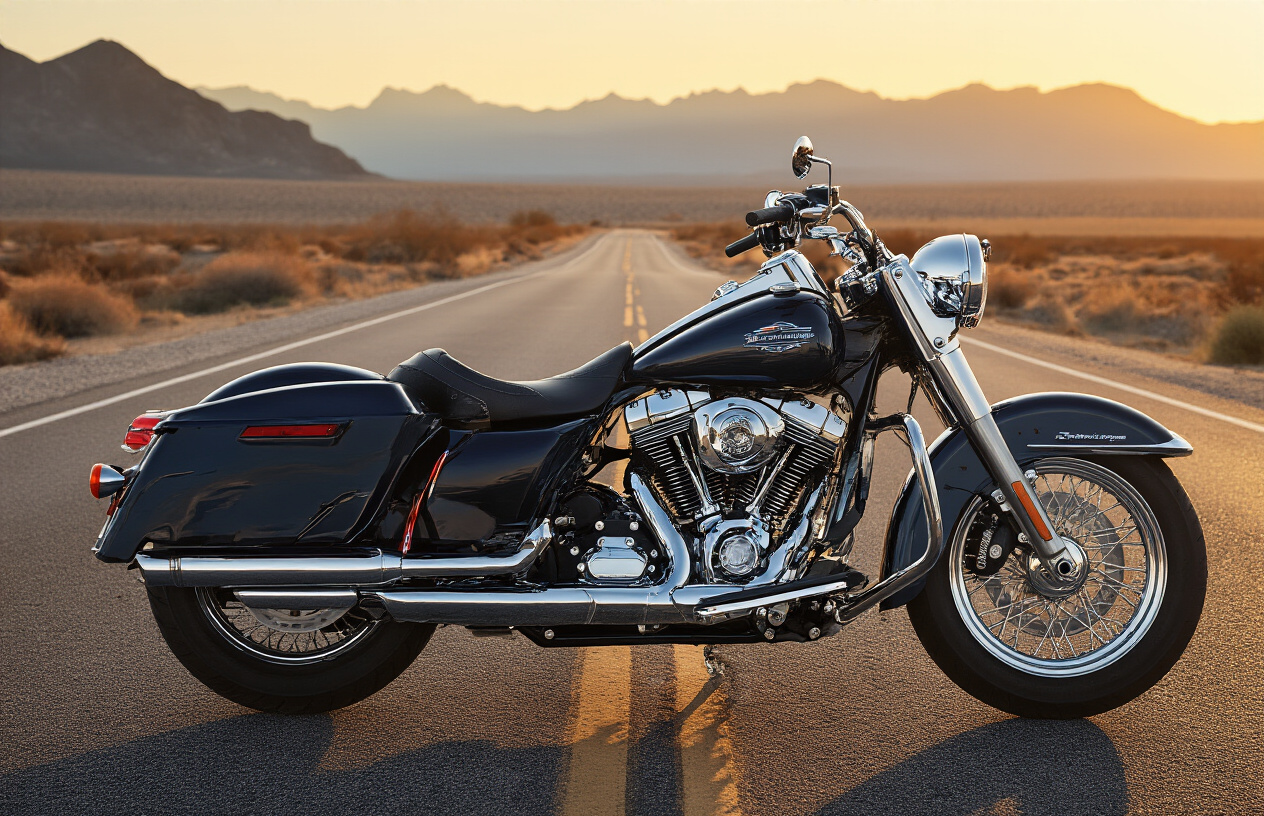
Design Philosophy: Form Meets Function
American motorcycles aren’t just built—they’re sculpted. Walk into any biker bar and you’ll spot them immediately: the stretched frames, the chunky engines, the gleaming chrome.
These bikes weren’t designed in sterile computer labs. They evolved on the open road, shaped by riders who wanted machines that looked as good parked outside a diner as they felt blasting down Route 66.
Take Harley’s Fat Boy—all that exposed metal isn’t just showing off. It’s honest engineering, where every part earns its keep while looking damn good doing it.
Engineering Characteristics: Torque vs. Horsepower
European and Japanese bikes chase that high-end horsepower number. American iron? We go for torque—that gut-punch of power from the moment you twist the throttle.
American V-twins deliver power where you actually use it: accelerating from lights, passing on highways, climbing hills with a passenger. That’s why they feel so satisfying to ride.
The numbers tell the story:
| Characteristic | American Approach | Foreign Approach |
|---|---|---|
| Engine Design | Big-bore V-twins | High-rev inline/V4s |
| Power Delivery | Low-end torque | Top-end horsepower |
| Engine Speed | 2,500-4,500 RPM | 8,000-14,000 RPM |
| Throttle Feel | Immediate grunt | Build-up to power band |
Riding Ergonomics: The American Posture
Hop on an American cruiser and you immediately feel it—that laid-back, arms-up, feet-forward stance. It’s not just style. This posture distributes your weight across your entire body, reducing fatigue on those long highway stretches.
The wide handlebars give you leverage for low-speed maneuvers while creating that iconic silhouette. Your spine stays neutral, not hunched over like on a sportbike or bolt upright like on adventure models.
Customization Culture and Aftermarket Support
American motorcycles aren’t finished when they leave the factory—they’re just getting started. The customization scene isn’t just accepted, it’s expected.
From mild to wild, the aftermarket for American bikes dwarfs what’s available for other brands. Entire companies exist just to make parts for a single model line.
This modding mentality is baked into the DNA of American motorcycling. The factory frame and engine are just a canvas—the finished bike is your personal expression on two wheels.

The American Motorcycle Legacy
From the roaring engines of Harley-Davidson that have defined the open road experience for generations to the phoenix-like resurrection of Indian Motorcycle, American motorcycle brands have carved out a unique place in both our cultural landscape and riders’ hearts. Each brand brings something special—whether it’s the unmistakable rumble of a V-twin engine, the craftsmanship evident in every weld, or the community that forms around these mechanical works of art.
As you consider your next ride, remember that choosing an American motorcycle isn’t just a purchase—it’s joining a legacy. Whether you gravitate toward the mainstream appeal of heritage brands or the exclusive craftsmanship of boutique manufacturers, these motorcycles offer more than transportation—they deliver freedom, identity, and a riding experience that’s distinctly American. The road awaits—what will your choice say about you?




